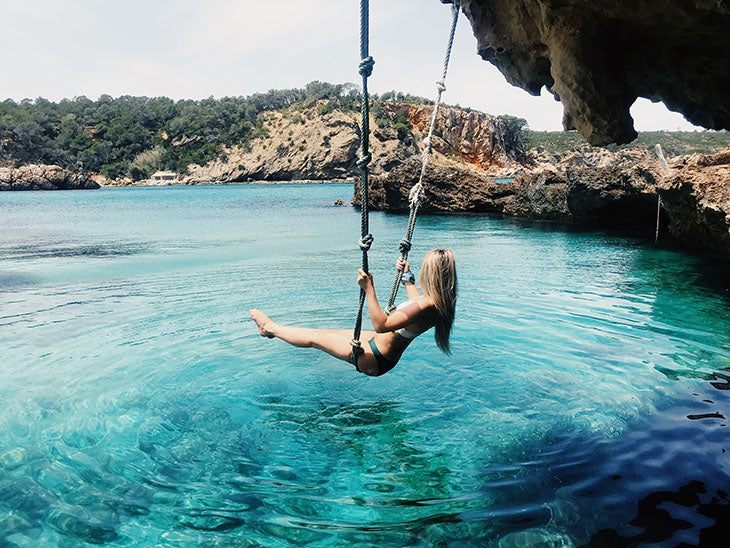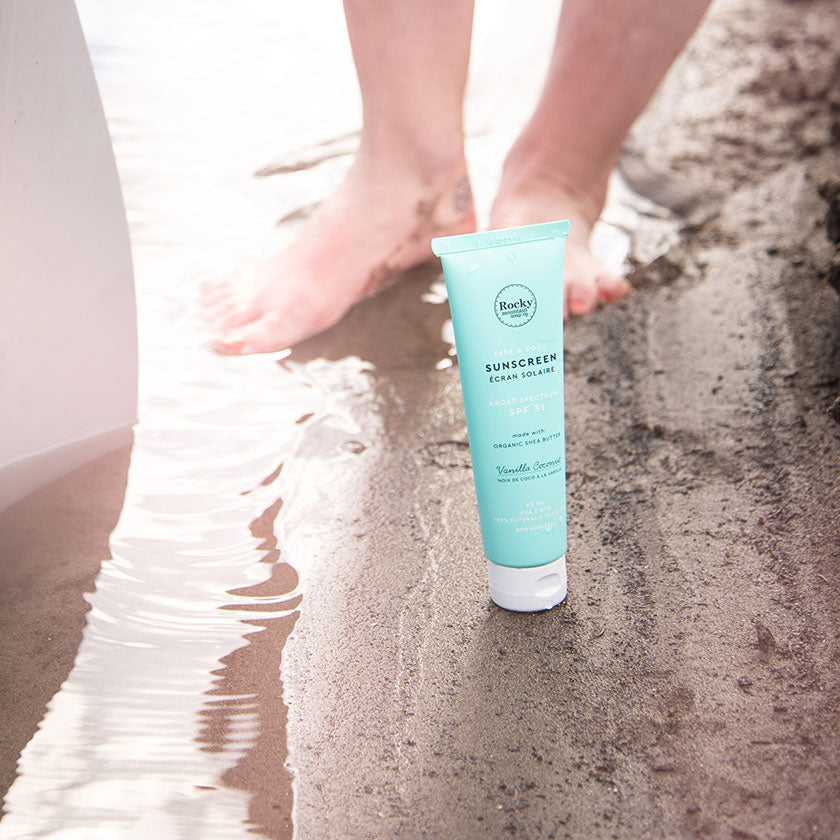Made in Canada—Free Shipping Over $50 CA & US
Made in Canada—Free Shipping Over $50 CA & US
Made in Canada—Free Shipping Over $50 CA & US
Made in Canada—Free Shipping Over $50 CA & US

July 03, 2019 4 min read 2 Comments
Hey you fish out there! Are you an avid swimmer, diver and general beach bum in the summer? Well, you've probably been hearing A LOT about reef-safe sunscreen and environmentally safe sunscreen. So, we wanted to get down to business and talk it out with you because it is something that we care deeply about.

Sunscreen seems like the hot topic of the year. It's everywhere! Words like natural, reef-safe and oxybenzone are floating around like sunscreen in water. Natural sunscreen is coming in hot and there is a good reason for that: people are becoming increasingly conscious of their impact on the planet around them. They want to choose a sunscreen that not only protects them from the sun's harmful UV rays but is also safe for their ventures into the water.

Hawaii was recently the first place in the world to actually make a law against reef harming chemicals in sunscreen. Researchers in Hawaii have seen an over 40% decline in reefs over the last few decades, which is a scary thought for marine life. After Hawaii, the small island nation of Palau also moved to ban reef harming sunscreens. They actually have one of the most diverse and largest marine reserves on the planet. Both these places rely heavily on their marine environments and are intent on protecting them.
This was a major step forward in the natural, reef-safe sunscreen movement. Since then, reef-safe sunscreen has become a topic of conversation and more people than ever are reading the back of sunscreen bottles (yay!).
Reef-safe sunscreen is not something that is legislated federally in Canada, the US or internationally. Again, the only places with actual legislation are Hawaii and Palau.
It is honestly, something that brands have the option of saying about their products if they even fit some of the "criteria". However, no matter which sunscreen you are looking for, you want to ensure that all the following are true about your reef-safe sunscreen.
Let's talk for a moment about why the things above make your sunscreen reef-safe. Now, the main culprits that are bad for your corals and fish are nanoparticles and oxybenzone.

Choosing a natural sunscreen that is made from non-nano Zinc Oxide, like our natural sunscreen, is best for corals. Corals can ingest and consume nanoparticles which disrupt the coral's growth cycle and reproduction. This can lead to coral bleaching. Oxybenzone, on the other hand, is a chemical that can impact coral reefs in as little as 62 ppt. Yes, that's 62 parts per trillion, meaning the equivalent of one drop of water in 6.5 Olympic size swimming pools. This chemical also leads to coral bleaching and the decline of coral reefs.
Coral bleaching is like when you're sick. You might be pale or sluggish. Coral's bleach as a response to stress.

Coral bleaching technically is the coral expelling the algae from inside it. Coral and algae rely on each other to survive. The algae provide a complete food source to the coral and for their colour (hence why they turn white after expelling the algae). After prolonged algae loss, the coral will actually die.
Coral reefs only cover 1% of the ocean floor, but on average they provide the home and living environment for 25% of marine life to live and thrive. As we get more dead corals and coral bleaching, marine life also declines.
Did you know that in a year 14000 tonnes of sunscreen ends up in the ocean? That is a staggeringly large amount. This doesn't all come from swimming in the ocean either.

Using sunscreens on the beach, by the lake or even away from the ocean, can end up in the ocean. If it rains the sunscreen in the sand gets washed in. Lakes often drain into the ocean. It's all about the water cycle! So, using a reef-safe natural sunscreen everywhere is important.

January 15, 2025
I am heading to Hawaii in January and would like to be able to buy this sunscreen in all seasons!
Comments will be approved before showing up.


Rocky Mountain Soap Company
January 15, 2025
Thank you Ann for reaching out about our SPF sunscreen! We are out of stock with no specific back to stock return date. We have added your email address to our notification list so you are first to hear of its return. We’ve also passed on your comments to the relevant team!